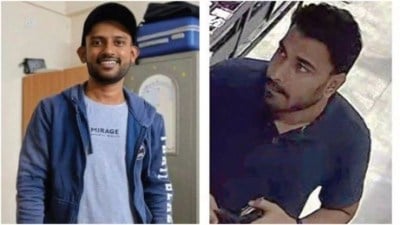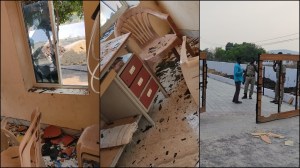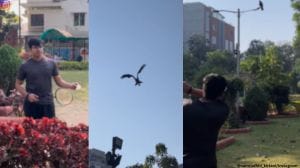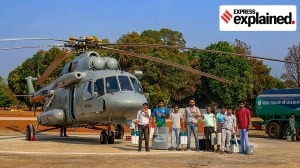- India
- International
Manpower crunch hits districts as Gujarat counts 1,00,566 Covid-19 cases
After its first case in March, Gujarat reported 10,000 cases by May 15, with 70 per cent of them in Ahmedabad. By June 30, the case burden began shifting towards Surat, with the reopening of industries. State tally stood at 32,000 then.
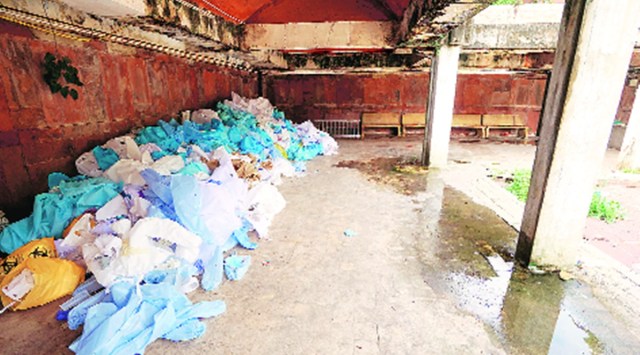 The study says that the decentralised method will reduce multiple contact points who handle the infected PPE kits. (Photo for representation by Bhupendra Rana)
The study says that the decentralised method will reduce multiple contact points who handle the infected PPE kits. (Photo for representation by Bhupendra Rana)Over five months after the first Covid-19 case was reported in Gujarat on March 19, the number of cases in the state crossed one lakh on Thursday, when several districts are battling rising infection and manpower crunch, even as the cities where the spread began are comparatively under control with timely intervention from the state health department and central teams.
Surendranagar district, which deputed medical professionals to Ahmedabad, had to request the health department to cancel the deputations when the district had a “nightmare-like” situation between July 10 and August 10, says district collector K Rajesh.
The district without a government medical college or hospital, reported 1,300 cases, of which over 1,000 were added in July and August, and had to rely on revenue department officials for monitoring home isolation patients.
According to Rajesh, the district relies mostly on the faculty of CU Shah Medical College, a private institution with 250 beds, and hospitals in other talukas with 800 more beds.
“Patients in home isolation have been provided with pulse oximeters with the instruction to call us if their oxygen saturation level drops. We have also formed eight teams who make WhatsApp video calls daily with a questionnaire, to check on them,” says Rajesh.

After its first case in March, Gujarat reported 10,000 cases by May 15, with 70 per cent of them in Ahmedabad. By June 30, the case burden began shifting towards Surat, with the reopening of industries. State tally stood at 32,000 then.
With the cases crossing one lakh, several districts claim that the infection spread because of free movement of people and reopening of industries.
By the second week of July, Gujarat started reporting nearly 1,000 cases per day and by July 21, the cumulative tally crossed 50,000. Most districts saw a spread in July and August, with Amreli, Junagadh and Surendranagar in Saurashtra being the latest to see a surge, attributed to reverse migration from Surat as well as reopening of industries, according to the district administration.
Bharuch, which recorded nearly 700 cases in August and another 600 cases in July, is relying largely on private facilities and private doctors even as the district health officials voiced “lack of cooperation from the Indian Medical Association (IMA) local branch”. The district continues to send resources to Ahmedabad.
“We placed advertisements for recruiting doctors twice but no one expressed interest. We also requested the state health department for manpower several times but nothing came out. The Bharuch Civil Hospital is a Covid centre and two private hospitals — Jayaben Modi Hospital and Al-Mahmud Hospital in Jambusar — are largely running on their own staff and doctors,” said a health official.
HK Bhavsar, additional director of medical services, says, “Bharuch never made any representation to us, seeking manpower on deputation. For districts that are genuinely in need, we do. Local administration can recruit more, tie-up with local IMA branches and private doctors.”
Principal secretary, health and family welfare, Jayanti Ravi, is currently camping in Rajkot, which has been reporting around 100 cases per day for a week and is being directly monitored by Chief Minister Vijay Rupani.
According to Dr Raghavendra Dixit, additional director, medical education, who is in Rajkot, the city, which has over 2,100 active patients, has roped in around 30 undergraduate students for Covid-19 duty.
VG Vanzara, director of medical education of the state health department, said 213 doctors were selected for contractual appointments, but said he didn’t have details as appointments were under the jurisdiction of the health commissioner. Health commissioner Jaiprakash Shivahare did not respond to calls.
IMA Gujarat chapter president, Dr Chandresh Jardosh, said that the association has provided services across the state in three ways — on-call duty, rotational duty and teleconsultation — with nearly 500 doctors volunteering their services, of the 2,900 in the state.
However, Jardosh cites several factors, including “rude behaviour from several district collectors, no remuneration for services and an differential treatment from government authorities” as some of the reasons for non-participation from private doctors.
In the tribal district of Narmada, at one point one government physician treated 100 indoor patients, said district collector MR Kothari. Narmada added over 500 cases in July and August, hitting a peak around July 23, according to Kothari. It has 68 active patients at present, and no Covid deaths so far. The other district with zero deaths is the tribal district of Dang.
“We got support from IMA and now have two physicians. We recruited peripheral staff and we had our PHC doctors serve at the hospital in rotational duty,” said Kothari.
Mehsana purportedly saw its peak July-end and beginning of August, when as per the district collector HK Patel, “leading private physicians from the district (rural side) were reporting 60 to 70 cases a day”. It has nearly 500 active patients now.
Home isolation along with participation of private practitioners aided Mehsana in reducing patient load from its tertiary healthcare systems, says Patel. In the dedicated Covid hospital of Sai Krishna Hospital in Radhanpur, which had 91 beds occupied in July-end, now has only 10 beds occupied. The district has 30 patients in hospitals.
“Now, we see only poor patients going for hospitalisation, with most others opting for home isolation,” added Patel. Testing focus remains on industries and corporate houses, with 1,200 to 1,500 antigen tests per day.
Banaskantha added nearly 900 cases since July. Now it has 125 active cases, of w hich 70 are in hospitals. The district now plans to target banks, post offices, rickshaw drivers, vendors, government offices for testing.
Banaskantha health officer said that manpower was one aspect in which the district had been secure, with Banas Medical College providing qualified specialists. “We did not have to rely on private hospitals or on private practitioners. With five government hospitals, we had a combined capacity of 425 beds and nine private hospitals added 280 beds to the capacity,” the officer said.
Some districts have largely shifted to antigen testing with the RTPCR making up between 5-20 per cent of the total testing. According to medical practitioners, Navsari and Anand are relying mostly on chest scans to diagnose Covid-19, due to controlled testing.
IMA president Dr Jardosh says the focus on antigen tests was driven by the fact that RTPCR positives are immediately updated as a count on the central ICMR portal while with antigen tests, it becomes easier to “manage numbers”.
Gujarat, which saw disparities in the death figures reported by the state Covid-19 bulletin and the local district administrations, saw the latter do away with their dashboards subsequently.
Apr 18: Latest News
- 01
- 02
- 03
- 04
- 05











